Chris Parkin - resident tech head - provides a guided tour of the relative merits of scope adjustment dials...
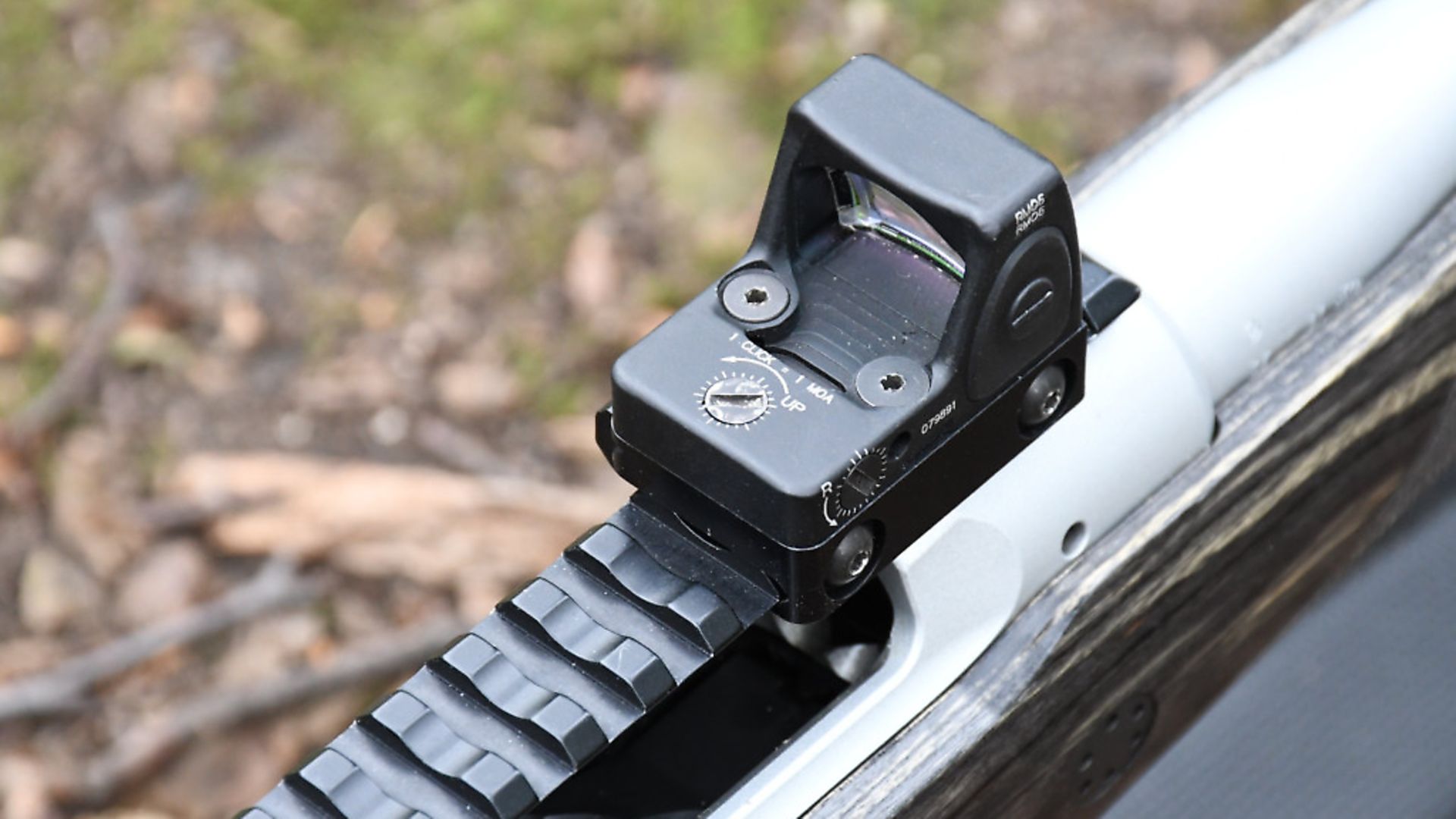 credit: Archant
credit: Archant
Check out our new YouTube channel - Shooting & Country TV
Choosing a riflescope is not just about glass quality and overall specification; the ways the scope is zeroed and adjusted are also important considerations, which are often overlooked. There is a wide range of options from the ultra-simple, to the mind-bogglingly complicated. Here is a look at the options on offer.
The more complex turrets will be covered next month. So, starting with dials at the most basic level, something like this Aimpoint red dot sight (1) illustrates the simplest tiny adjusters, with pins in the actual cap of the dial, used primarily to apply adjustment for a single distance zero without any dialling capability. This makes it unlikely to be used at differing ranges.
Something like a red-dot reflex sight can be miniaturised even more so with a flat blade or an Allen grub screw, allowing the optic to remain ultra-compact 2. The capped dial is what’s most commonly adjusted and is found in multiple formats with a slot for either a screwdriver or a coin. These days, nearly all scopes offer fingertip adjustability without the need for tools (3). The high-end optics may show greater complexity. Take, for example, this premium Schmidt & Bender Klassic (4), which has a position indicator incorporated to illustrate the scope’s reticule position within its overall mechanical range. It’s nice, but hardly an essential on a non-dialling fixed magnification hunting scope.
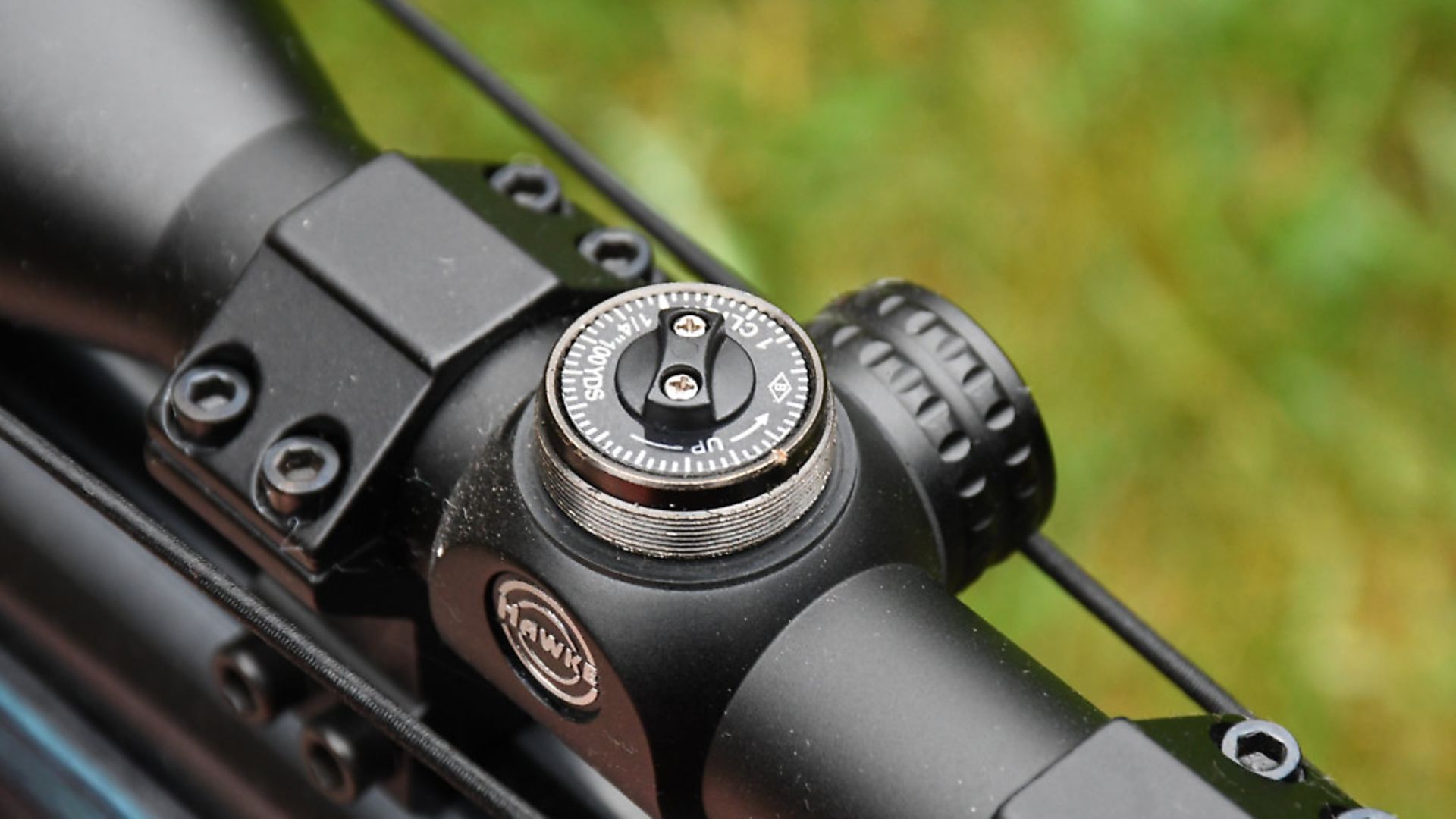 credit: Archant
credit: Archant
After removing the cap, this Hawke (5) shows similar fingertip adjustability. However, when positioned laterally, the incremental markings are visible from the shooting position, so you don’t have to look from above or count the clicks as you hear them.
Moving into the more modern dialling era, this Hawke (6) features laterally visible clicks, showing numerical markings, which makes precise dialling to longer ranges easier to see and read, thus reducing the likelihood of error. The low-profile turret can be removed and refitted after zeroing. The ‘0’ marker aligns at your chosen range, with further alterations all going in the ‘UP’ direction. Any of these systems can show angular increments in true minutes of angle (MOA), or inches at 100 yards or milliradians 1cm (1 mrad equals 10cm at 100m, or 10 individual clicks of 1cm per click), as seen on many European/metric scopes.
Some turn clockwise for ‘UP’, others, anti-clockwise. Though many manufacturers have a preference, the high-end makers, such as Schmidt & Bender, allow the user a choice when ordering a scope so that the user can match what they’re already familiar with.
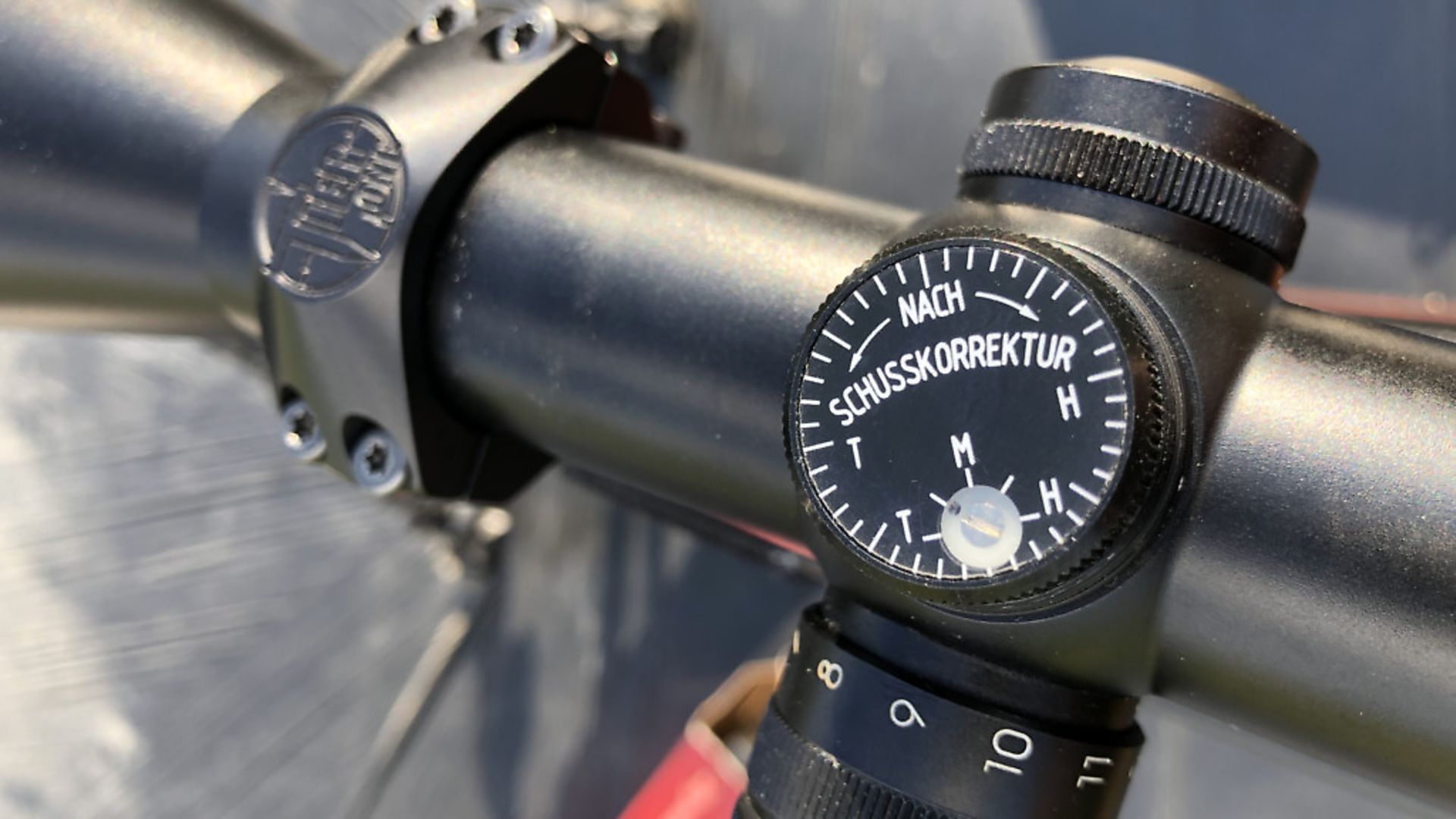 credit: Archant
credit: Archant
With caps no longer needed to prevent the ingress of water or dust (courtesy of modern seals and materials), a smaller turret (7) allows for an immediate aim point correction in either a hunting or tactical scenario. The lift-to-turn dial (8) must be unlocked to allow rotation. This is one of the great hunting options, in my opinion, as it enables range variation with a lower profile and reduces the likelihood of unintentional snags causing an unwanted adjustment that would only be discovered when a shot goes wrong.
With removable caps and the ability to swap the outer rim of dials with manufacturer-supplied – or even custom-engraved options – scopes like this Steiner give approximate ballistic adjustment for a variety of sporting cartridges used at typical hunting ranges. This starts to become a personal choice as to what you consider that truly means. Personally, if I want to shoot longer ranges, I want to research and produce empirical data myself, not go with a ballpark approximation based on published velocities without any deeper understanding.
Having a customised turret collar engraved is an option that obviously cannot be adjusted for varying atmospheric conditions or ammunition availability. It can also be both expensive and restrictive. Consider the hunting culture and quarry species from the countries where the kit comes from: other countries’ needs don’t always mirror those of a UK shooter – not to mention that the marketing can be deceptive and/or pointless.
I once had a manufacturer (who shall remain nameless) suggest that shots on running boar could have windage dialled to compensate for correct lead. I have yet to encounter any scenario in which that is plausible.
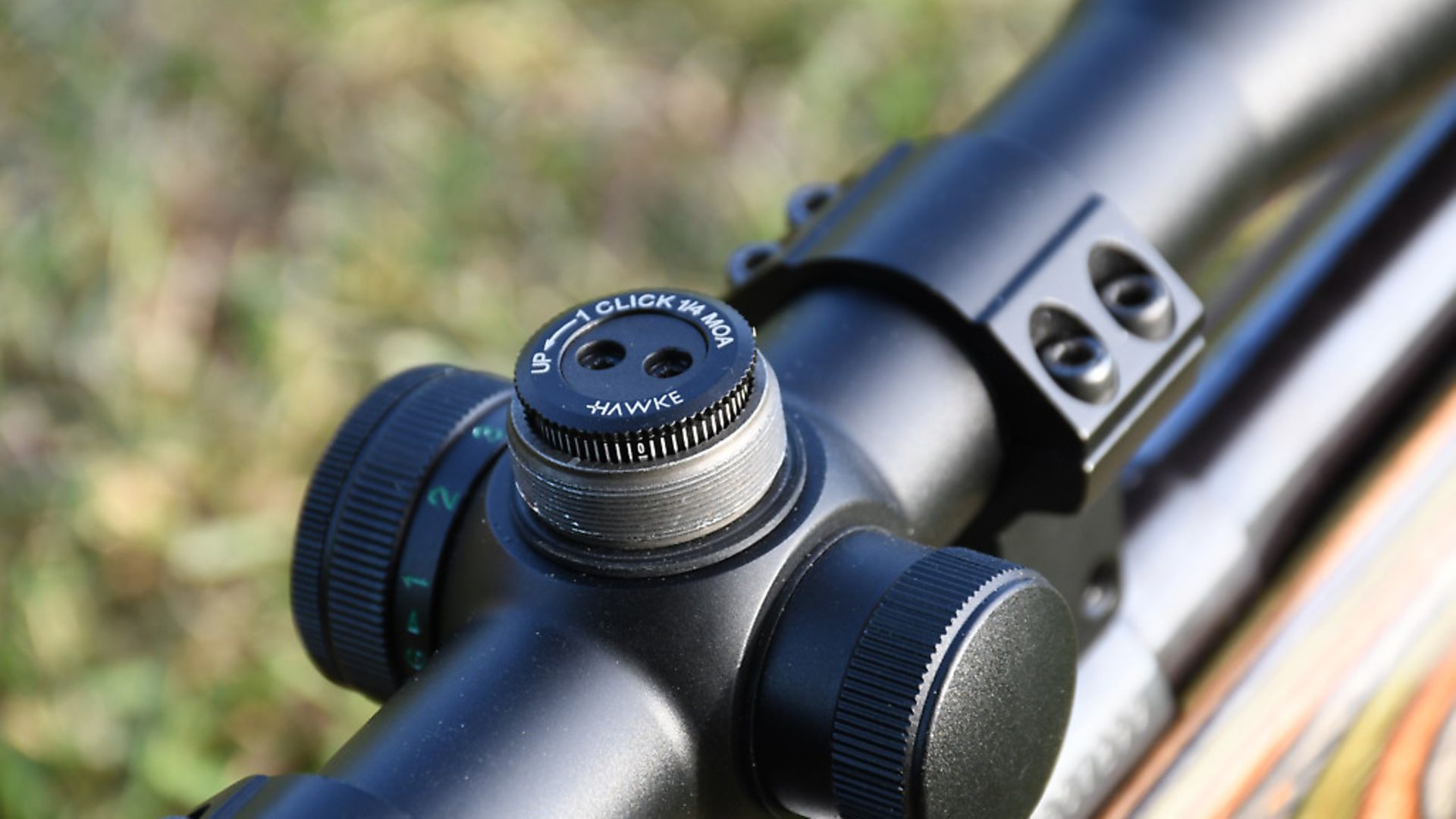 credit: Archant
credit: Archant
Moving on to the final two dials, which actually cross over into becoming turrets. This zero-stop Schmidt & Bender (9) locking lever on the front left-hand side completely separates the concepts of dialling on account of its ability to lock one distance – avoiding any chance of an accidental lift-to-turn rotation of the turret.
I have never had problems with lift-to-turn turrets, but this is a reassuring system that required deliberate secondary effort to engage or disengage, with a distinctly altered finger position to prevent mistakes (i.e. having the safety catch separate from the trigger blade). Of course, the windage dials can also be seen to follow similar paths to the elevation dial. Many hunting scopes will show windage control with less complexity, as it’s deemed less likely to be correcting long shots on live quarry by dialling rather than just aim-offs.
Otherwise, the Blaser scope shows the windage and parallax dials swapped from left to right as the manufacturers deemed it more ergonomically appropriate. Although, after seeing most scopes stick to windage on the right-hand side and parallax on the left, it seems to me to be a little bit like robbing from Peter to pay Paul with no distinct advantage in what is a sport that is directly affected by hand dominance.
Kahles have given the option of personalising your precision optics with a similar left- or right-hand side windage turret. But to me, most shooters have long gotten used to where the controls are most likely to be positioned and, like the indicators on a car’s steering column, they will either be on the usual side, or else they’ll feel very strange.
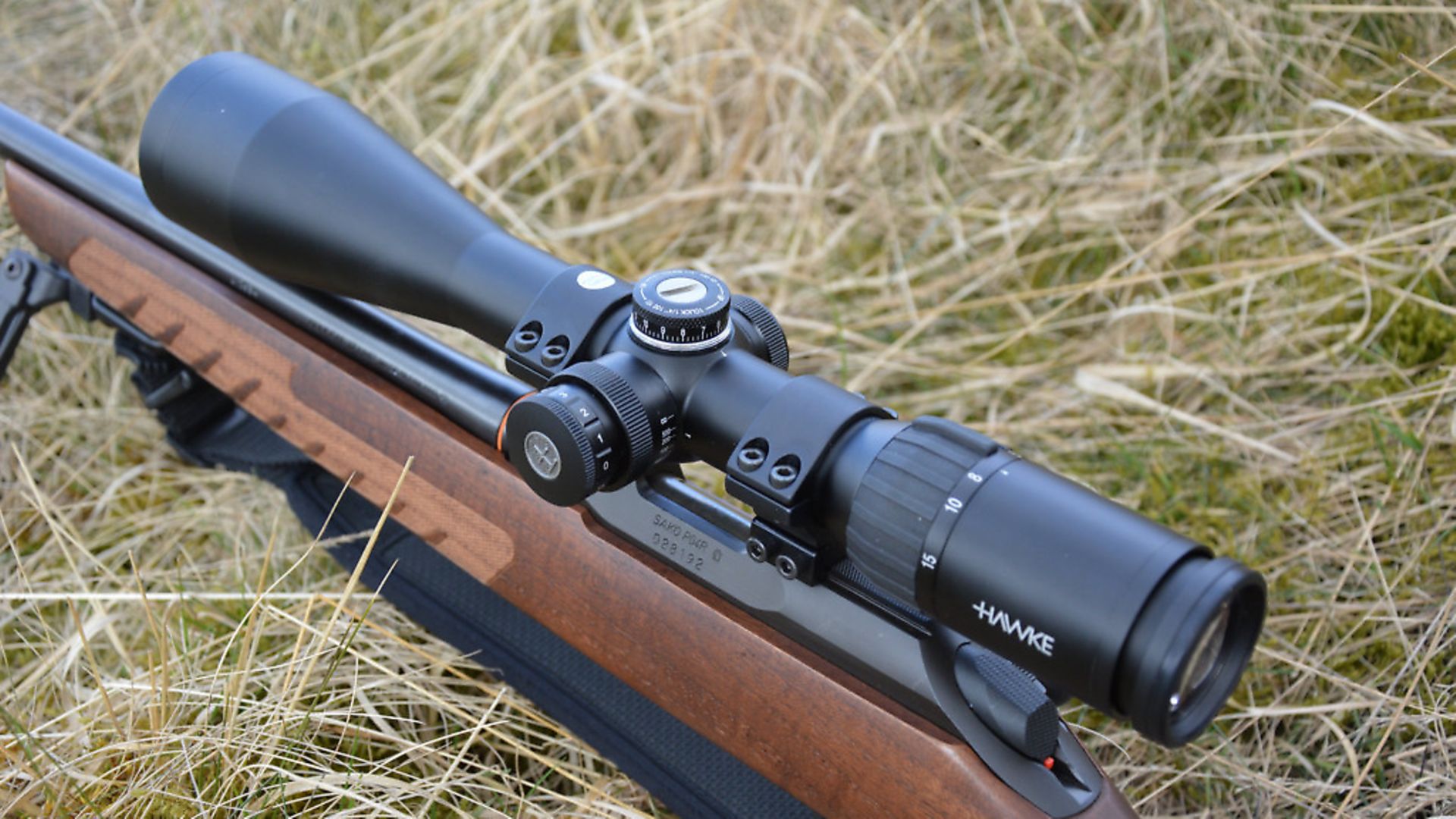 credit: Archant
credit: Archant
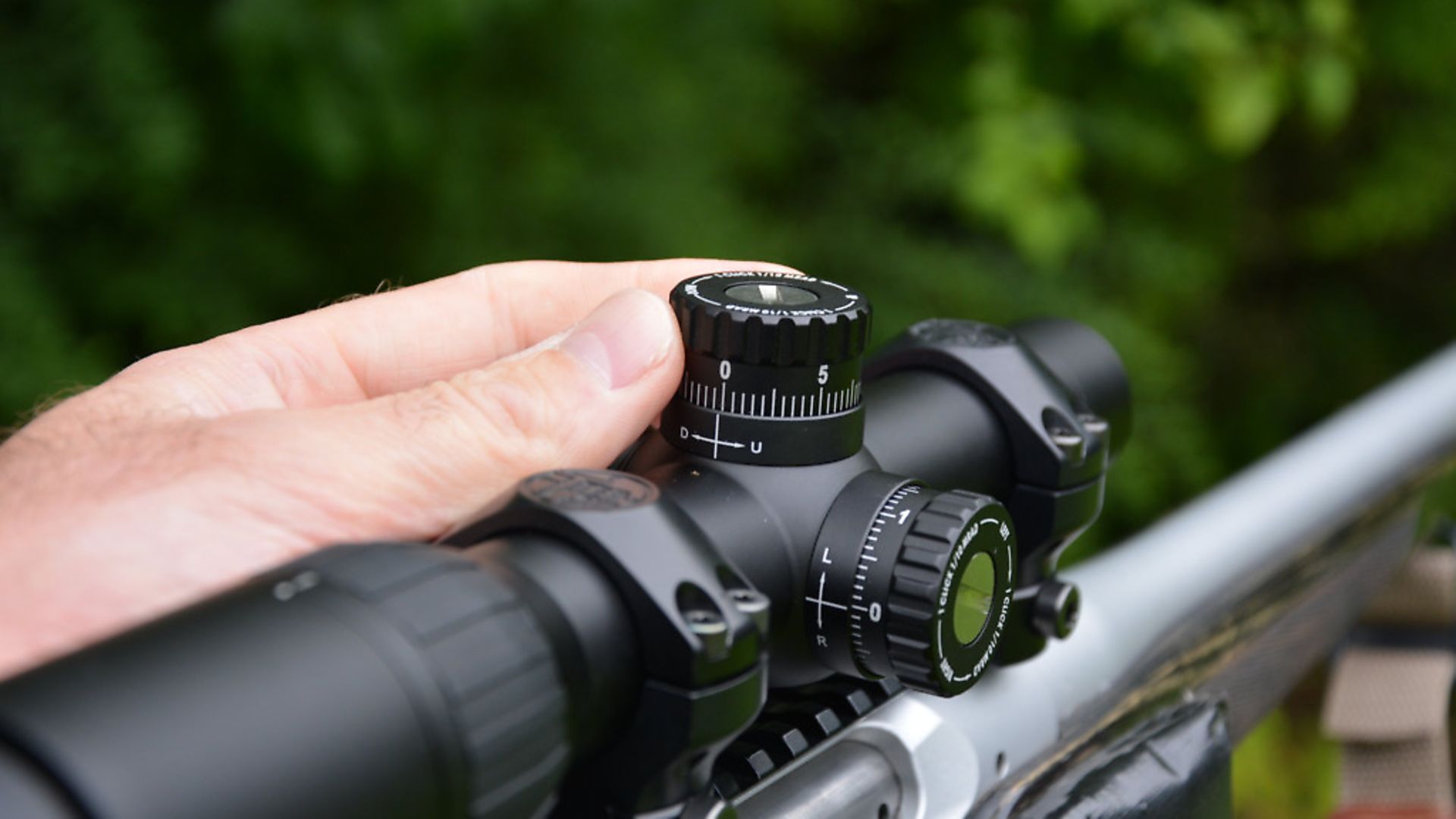 credit: Archant
credit: Archant
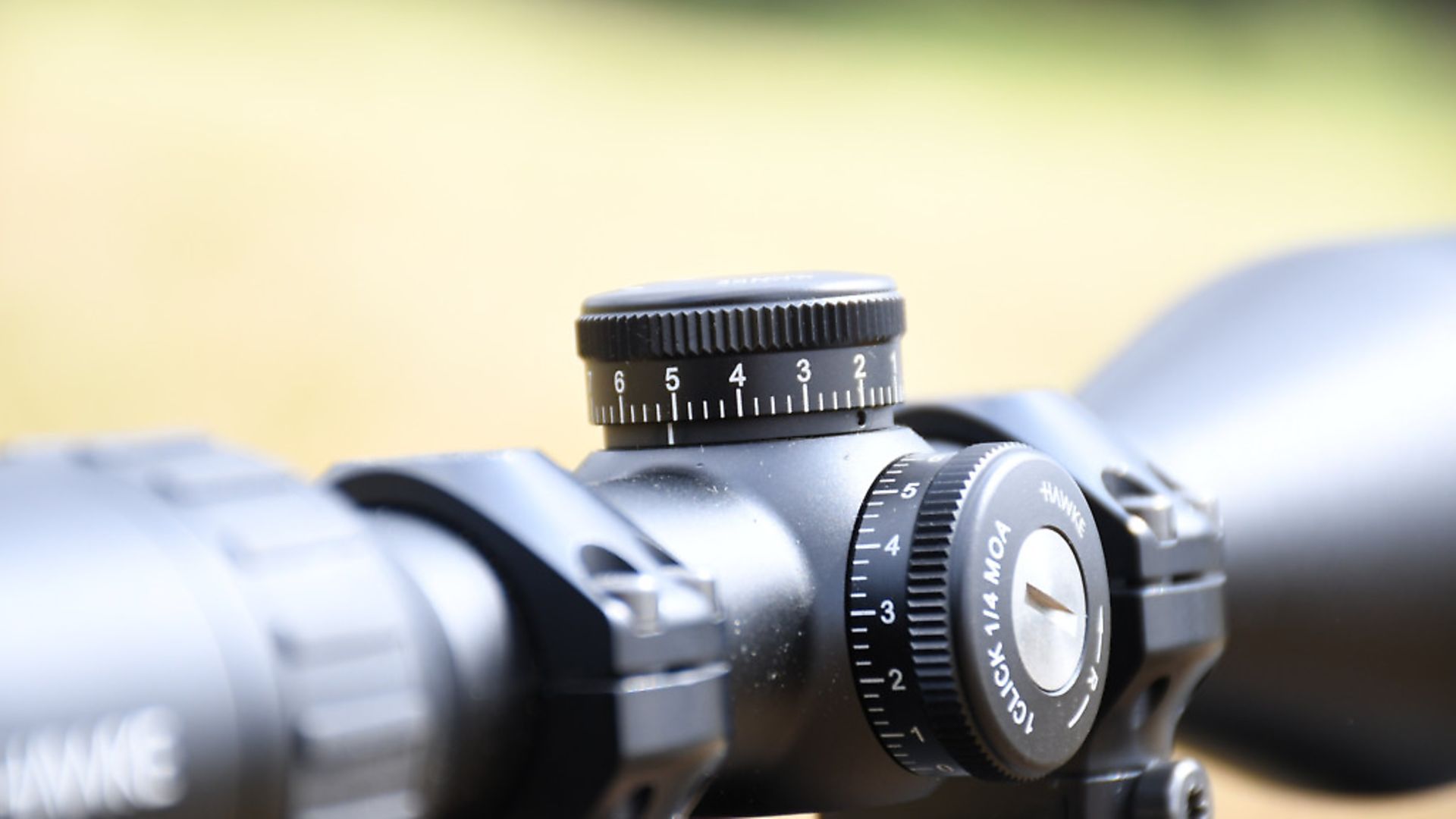 credit: Archant
credit: Archant
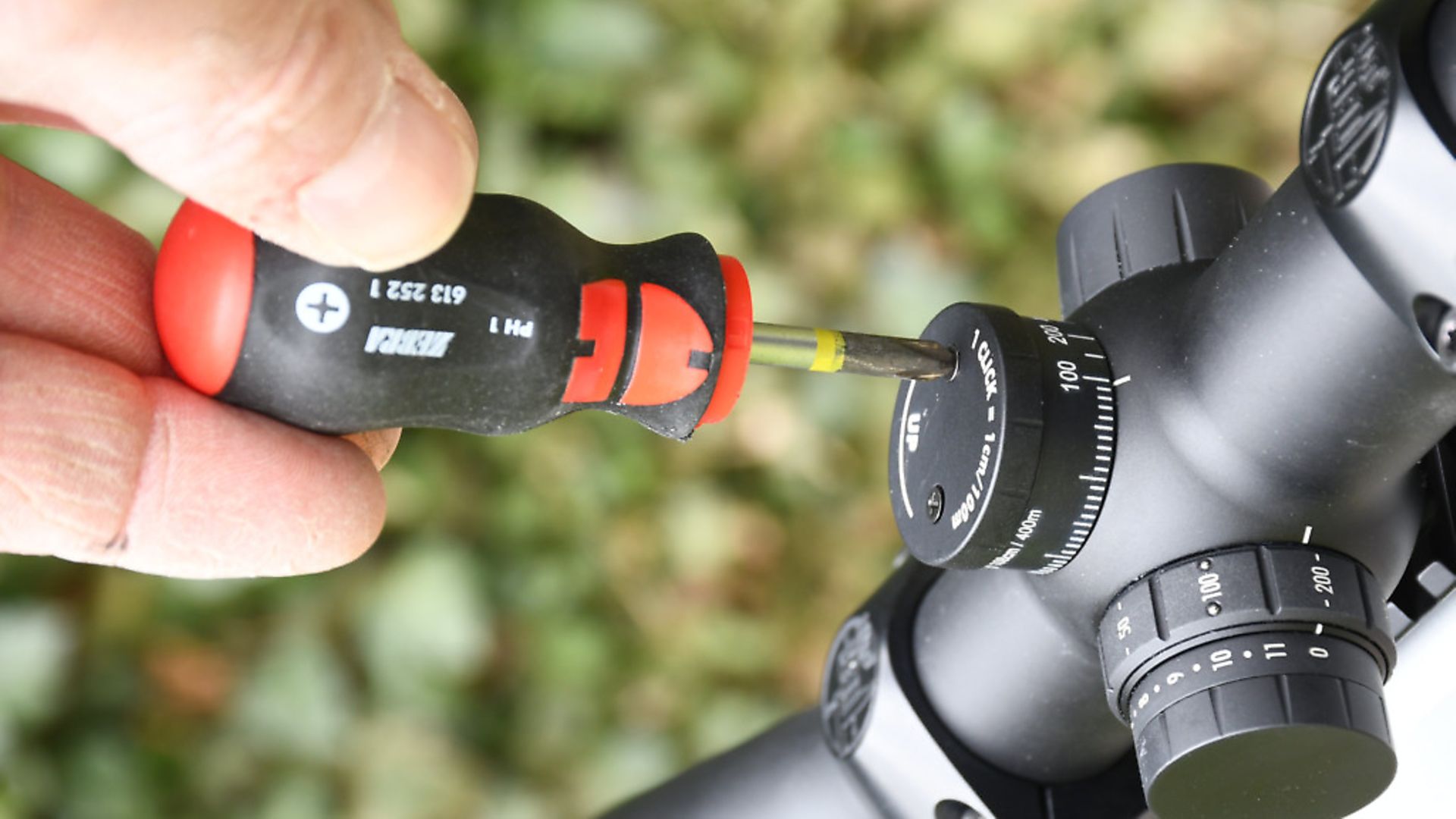 credit: Archant
credit: Archant
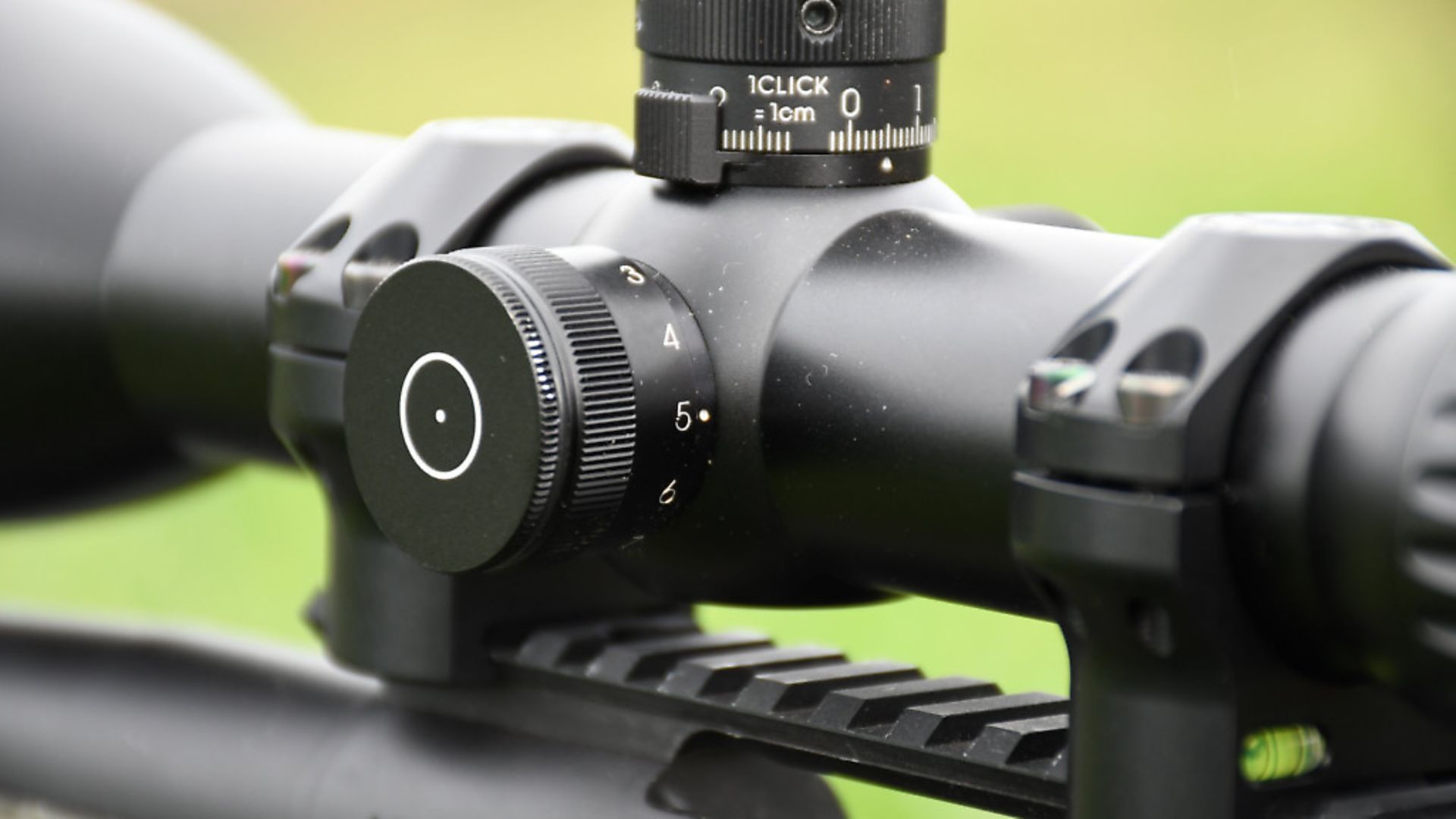 credit: Archant
credit: Archant
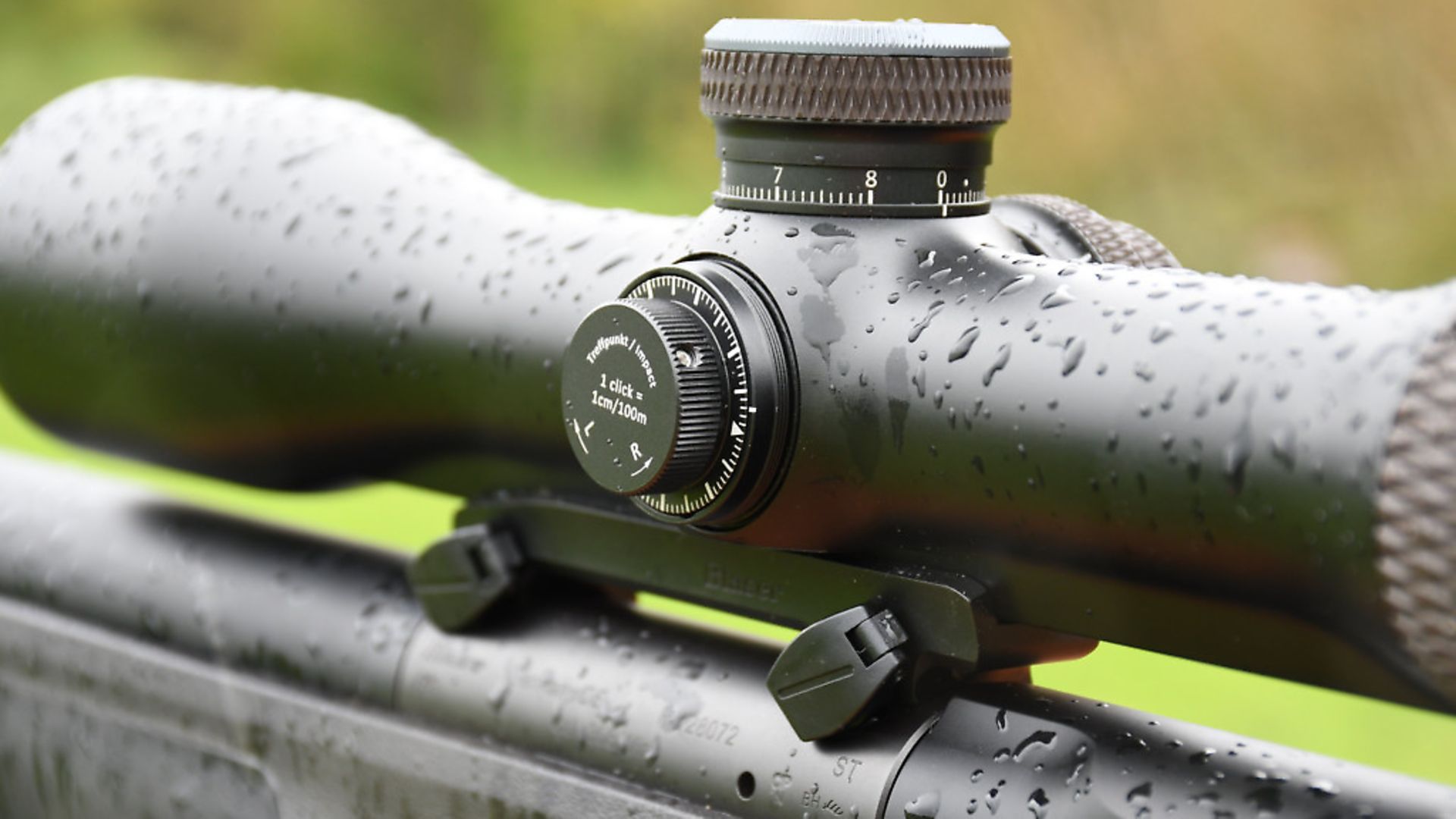 credit: Archant
credit: Archant